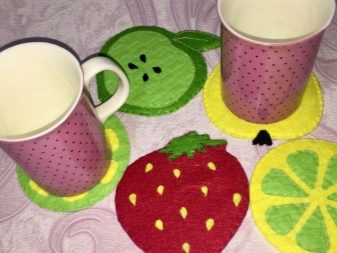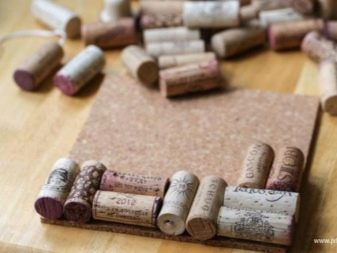Purpose and types of hot coasters
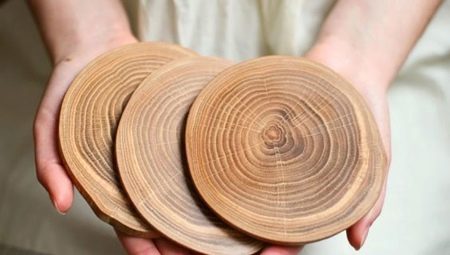
A hot stand is an indispensable accessory that is present in every kitchen. This trinket not only protects furniture from high temperatures, but also serves as a decorative function in the interior. In stores, you can find coasters of various shapes and sizes, but it is possible to make a beautiful accessory at home with your own hands.
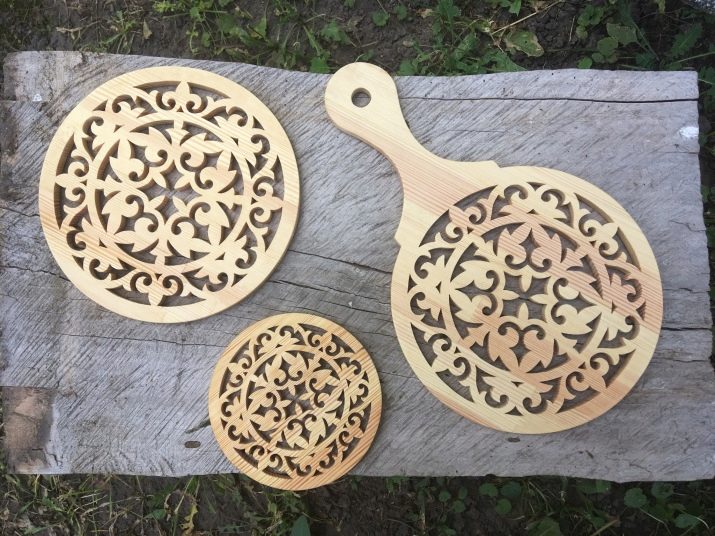

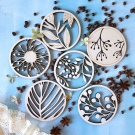

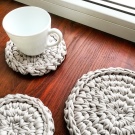
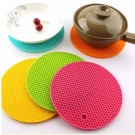
general description
The kitchen accessory is a small flat piece made of heat-resistant material, made in a decorative style. Hot coasters come in various shapes (round, square, rectangular), sizes and are made of all kinds of materials that have one similar quality - resistance to temperature influences.
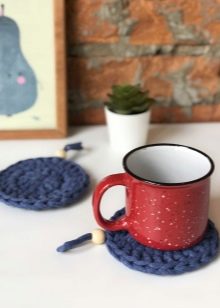

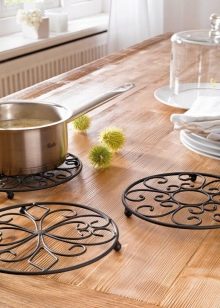
The main purpose of the stands:
- protection of surfaces from mechanical damage;
- prevention of contact of the surface with the hot bottom of teapots, pans, mugs and other utensils, whose installation on the table can lead to damage to the coating;
- participation in interior design as a decorative element.
The history of the emergence of the stand goes back far into the past, in Germany in the 19th century. The item may have appeared even earlier, but the first mentions of underlays for beer mugs are associated with German bars of that time.
Since then, the coasters have taken root and have been greatly modernized, still remaining beloved among housewives and not losing their relevance.
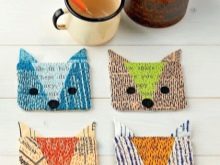

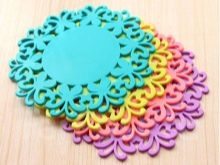
Overview of species by purpose
Despite the pronounced decorativeness, usually hot coasters are purchased for the purpose of practical use. Depending on what kind of dishes the accessory is intended for, there are several types.
- Coasters for plates. Used to be installed under dishes, made of lightweight, slip-resistant material.

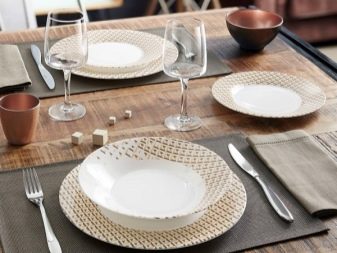
- Cup holders for mugs and glasses, as well as small (e.g. teapots) teapots and coffee pots. Small and light, easy to use, do not take up much space, they are often made in a fancy carved form.

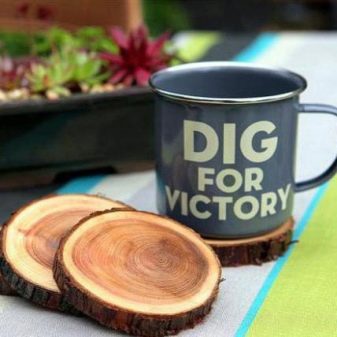
- Coasters for large dishes (hot pans, pots or teapots). They have a larger size and thickness, as they are designed to be installed under heavy products and must withstand strong pressure.
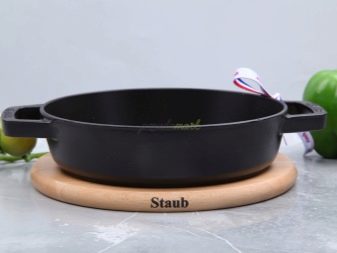
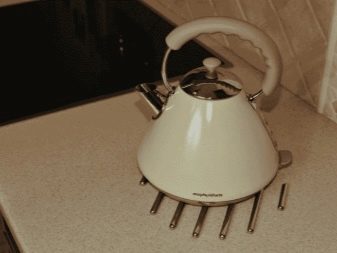
- Coasters used for serving and serving food in portioned baking dishes (pots or pans). They do an excellent job of heating.

Also, any stand can be used for placing under cold glasses, on which condensation forms in warm rooms. Continuous contact with moisture can also damage the wood flooring and cause the countertop to bulge.
Materials (edit)
Some people choose products based on the material used. So, natural wood not only looks attractive, but also smells like wood, fabric or bamboo coasters serve as an excellent decor in the kitchen. However, the main criterion is still functionality with high wear resistance and thermal protection inherent in materials.
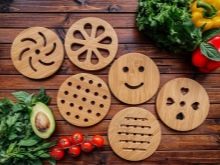
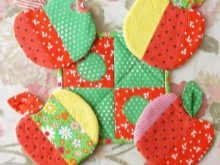
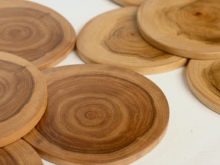
Wood
Wood accessories come in different shapes and sizes, carved for animals or plants, with additional inserts or made in the form of a lattice. Popular are models of a round shape, which are a longitudinal cut of a tree, as well as products consisting of many small round cuts connected to each other. Such stands have a number of advantages: light weight, environmental friendliness and attractive appearance. Naturalness and naturalness are great for country houses, as well as rustic interior styles (country, chalet or Provence).
Wooden products are made from different species: apple, oak, pine or beech, but juniper stands are considered the most affordable and attractive in terms of price-quality ratio. This material is relatively inexpensive, while it has excellent heat resistance. In addition, the products are impregnated with juniper aroma oil and emit a pleasant woody aroma.


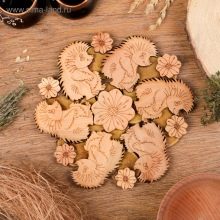
Thin and weightless accessories are made from plywood. Often, patterns and illustrations are painted or burned on them, using for decorative purposes.
Cork
Cork products look original, serve as an unusual accessory and perfectly tolerate the effects of hot dishes. These coasters are inexpensive and sold in any store, but over time they can begin to crumble. Some cork coasters have a special moisture-resistant coating on the front side. They serve more as a decorative function and are suitable for serving tables under mugs and plates, but they will suffer from contact with heavy hot pans.
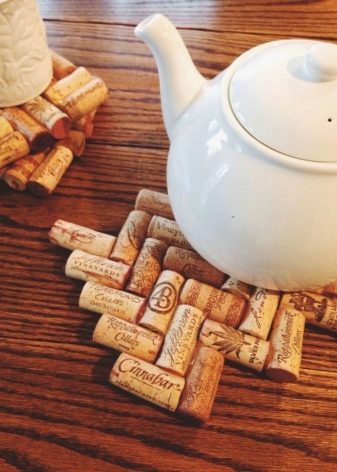
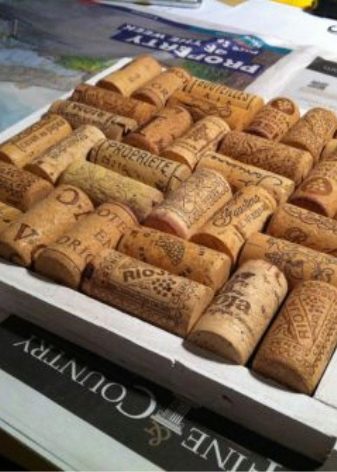
Silicone
Silicone products are now very common due to their high functionality. These coasters are difficult to use as an accessory when hanging around the kitchen, however, due to the density and heat resistance of silicone, they do an excellent job with their practical task. Silicone is soft and flexible and can be easily washed under water using a detergent. Such an accessory will serve for many years.
In order not to let the hostess get bored, manufacturers produce multi-colored models in the form of various animals and objects.
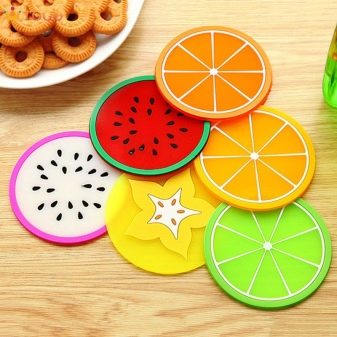
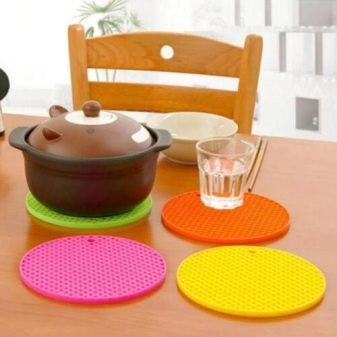
Ceramics
Ceramic coasters look decent in the kitchen interior as an independent accessory. These products are produced with beautiful ornaments and colorful paintings, so they can be placed on the walls as an alternative to paintings or panels. In addition to the decorative function, ceramics does an excellent job with the main task and is well suited for the role of a spectacular cup holder or stand for coffee sets.
The only drawback is the fragility of the material, so falling to the floor can be fatal for the product.
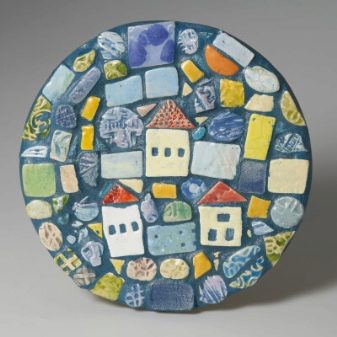

Textile
Fabric coasters are soft and tactilely pleasant, they look cozy and domesticate the interior, giving the kitchen warmth and comfort. Materials are different: plain fabric, yarn, wool or lace. Models made of felt or accessories woven using the macrame technique look original.
Textiles do not slip and protect surfaces well, but they can get dirty quickly and need constant washing.
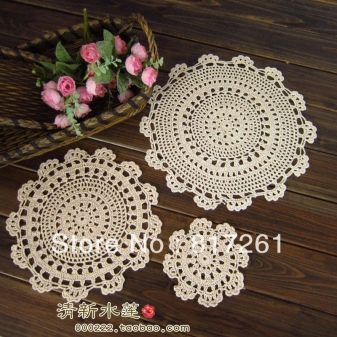
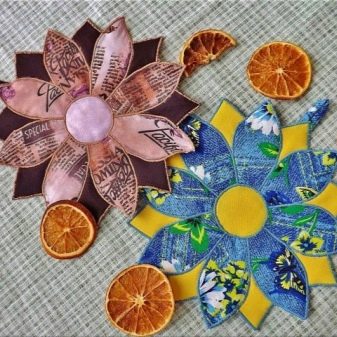
Metal
Metal stands are classics of the genre found in villages. Products are often made of cast iron and are used as a base for pans, pots and stove pots. There are also models made of stainless steel and iron, most of them have the appearance of lattices or forged patterns for decorative purposes. However, modern housewives find such coasters impractical due to their strong thermal conductivity, as a result of which they quickly and strongly heat up.
In order not to spoil wooden tables, iron stands can be used on solid stone countertops.
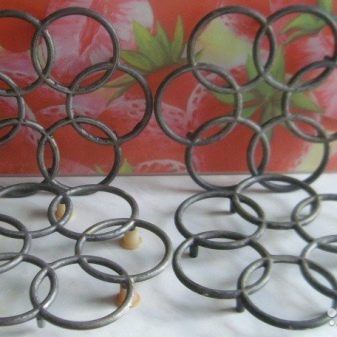
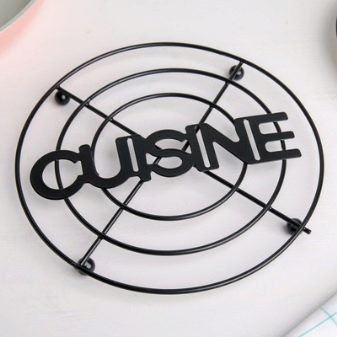
Other
In addition to the most common, there are many other materials. In everyday life, plastic coasters are used: they are bright and easy to clean, but they slide on the table. There are also more rare types of coasters - made of leather, marble or epoxy resin. The latter can be made independently, and the result obtained becomes a spectacular decoration of the kitchen. There are original folding models that adapt to the size of the dish and can fit both a small cup and a large baking dish.
Glass coasters are becoming interesting accessories. Most often, they are placed under glasses or mugs, but they are not used for hot pots, since if they come into contact with too hot material, the glass can overheat and burst.
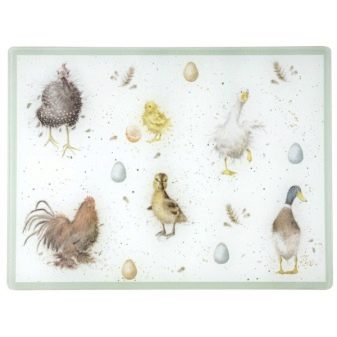
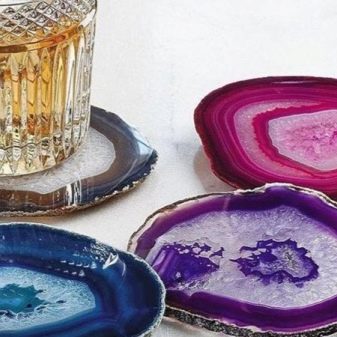
Design
There are many design options for people who want to purchase a stand as a beautiful decoration or decorative wall panel. You can choose the right model for any style of interior, from a gentle rustic Provence to an industrial loft.
Patchwork fabric coasters are easy to make yourself. The result is a home accessory made from many colorful patches. For a rustic style, knitted textile coasters are suitable, as well as ceramic products with printed patterns of flowers, poultry, sunflowers. Round accessories made of jute or birch bark braids look spectacular. Fans of unusual options will like products made from wine corks or pebbles, which are poured with epoxy resin.
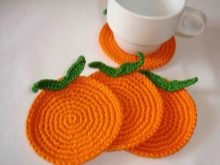

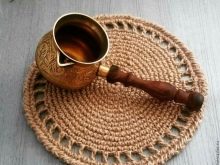
The large selection of silicone coasters offers a variety of color options, from completely black to pastel or vibrant colors. These models will especially appeal to children, since silicone products are available in the form of plants, daisies, fruits, cats or funny bears. If the hostess does not give the last place to functionality, a classic rack in the form of a lattice will do. You can find both wooden and metal products mounted on rubber feet.
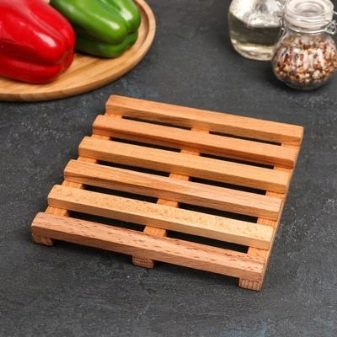
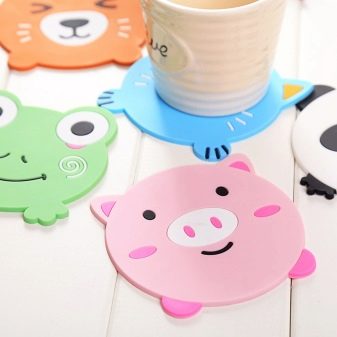
Nuances of choice
With the right choice of coasters for hot dishes, you need to look at the quality of the material, the size and purpose of the product. The criteria that you need to rely on when buying characterize the main functions of the stand:
- high temperature resistance;
- lack of sliding on the surface;
- lightweight material without unevenness, does not damage the tabletop when moving.
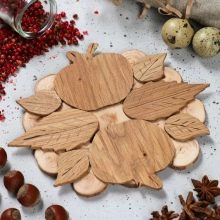
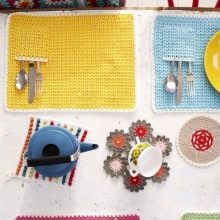
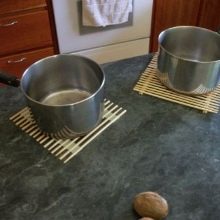
When it comes to purchasing a gift, then you need to focus on the preferences of the recipient. In this case, the emphasis can be placed on a stylish design, choosing as a gift an unusual and original option for decorating the interior.
It would be a great idea to purchase a set of several coasters designed for different dishes or made in different techniques.

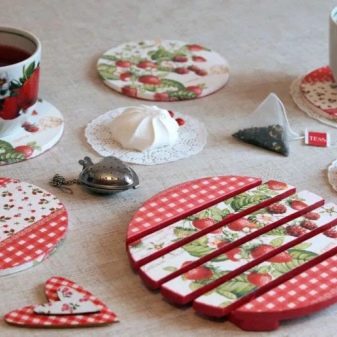
How to do it yourself?
All the best, as you know, is made by hand. Making a hot stand yourself is a simple but fun process that even a beginner can handle. You can involve children in handicrafts, combining business with pleasure and turning work into family gatherings.
No special talents or materials are required, everything you need is easy to find at hand. It is worth focusing on your skills: if the hostess can knit or roll, the textile stand will be ready in a matter of minutes. Beading craftswomen will also need their skill, because you can create an exclusive handicraft design from beads.

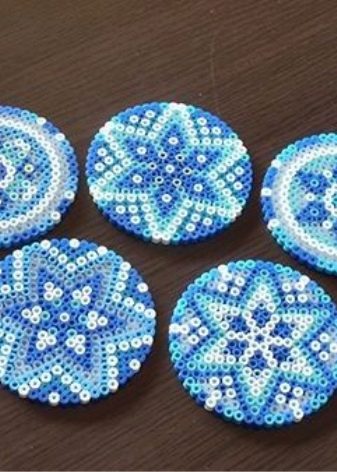
The most common option is to sew felt coasters. You only need a drawing with a template, threads with a needle and sheets of felt itself. The glue gun is not useful in work, so the needlewomen will not get dirty with glue or inadvertently burn themselves. People who know how to weave can use a paper vine: using the weaving technique from newspaper tubes, not only excellent baskets are obtained, but decorative coasters for hot dishes. The finished product can be painted and varnished for durability.
If there are old CDs in the house or a lot of wine corks have accumulated, you can give them a second life. The discs are used as a base and wrapped in cloth, thread or felt and then decorated. Wine corks are glued together or fixed on a cardboard or plywood base. You can also use an ordinary log lying around in the yard: having made a saw cut with a saw, it is carefully polished and decorated if desired. The finished log house is suitable as an independent stand, but several pieces of wood can be glued together to create a beautiful and eco-friendly stand made from natural materials.
